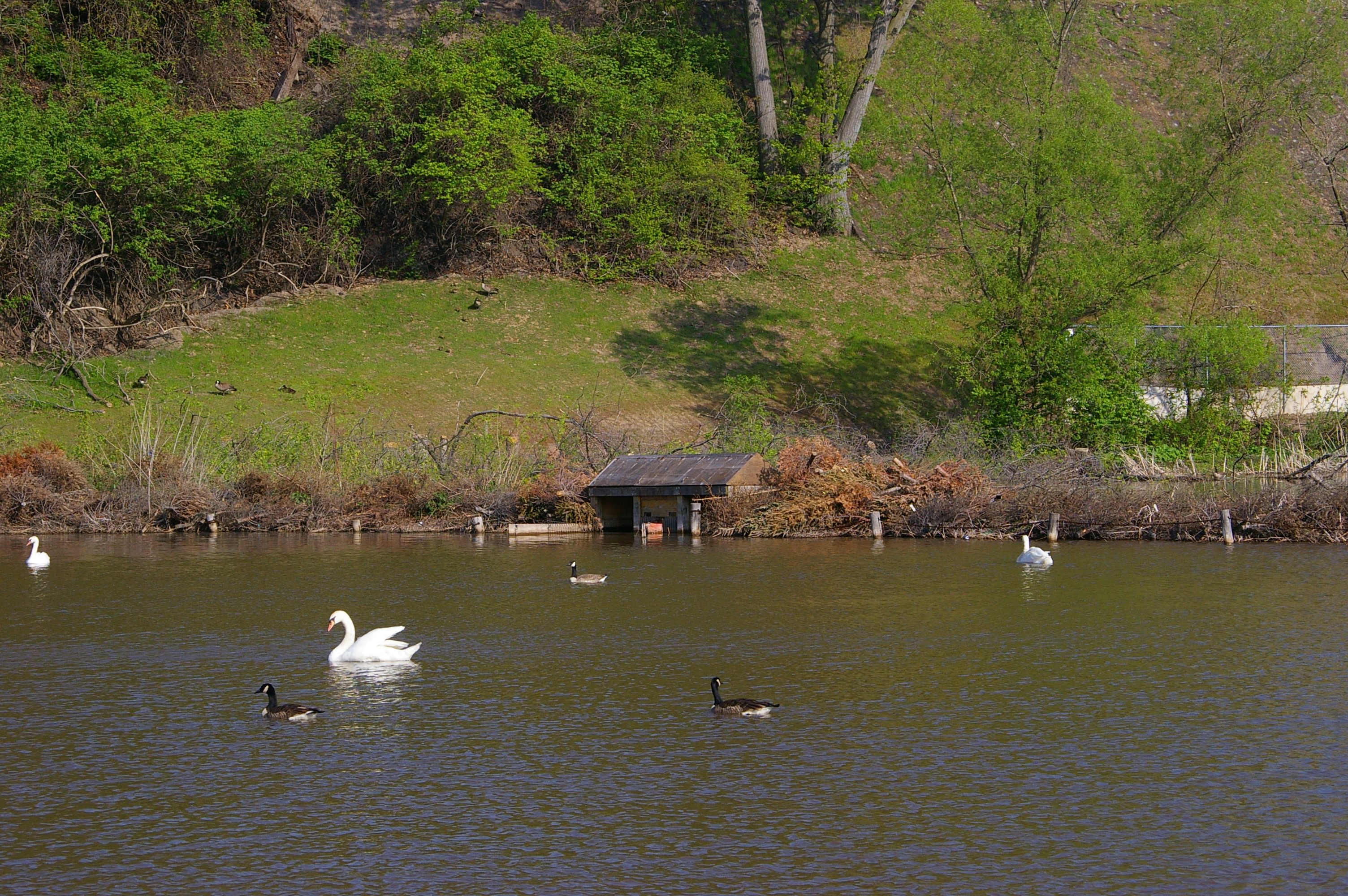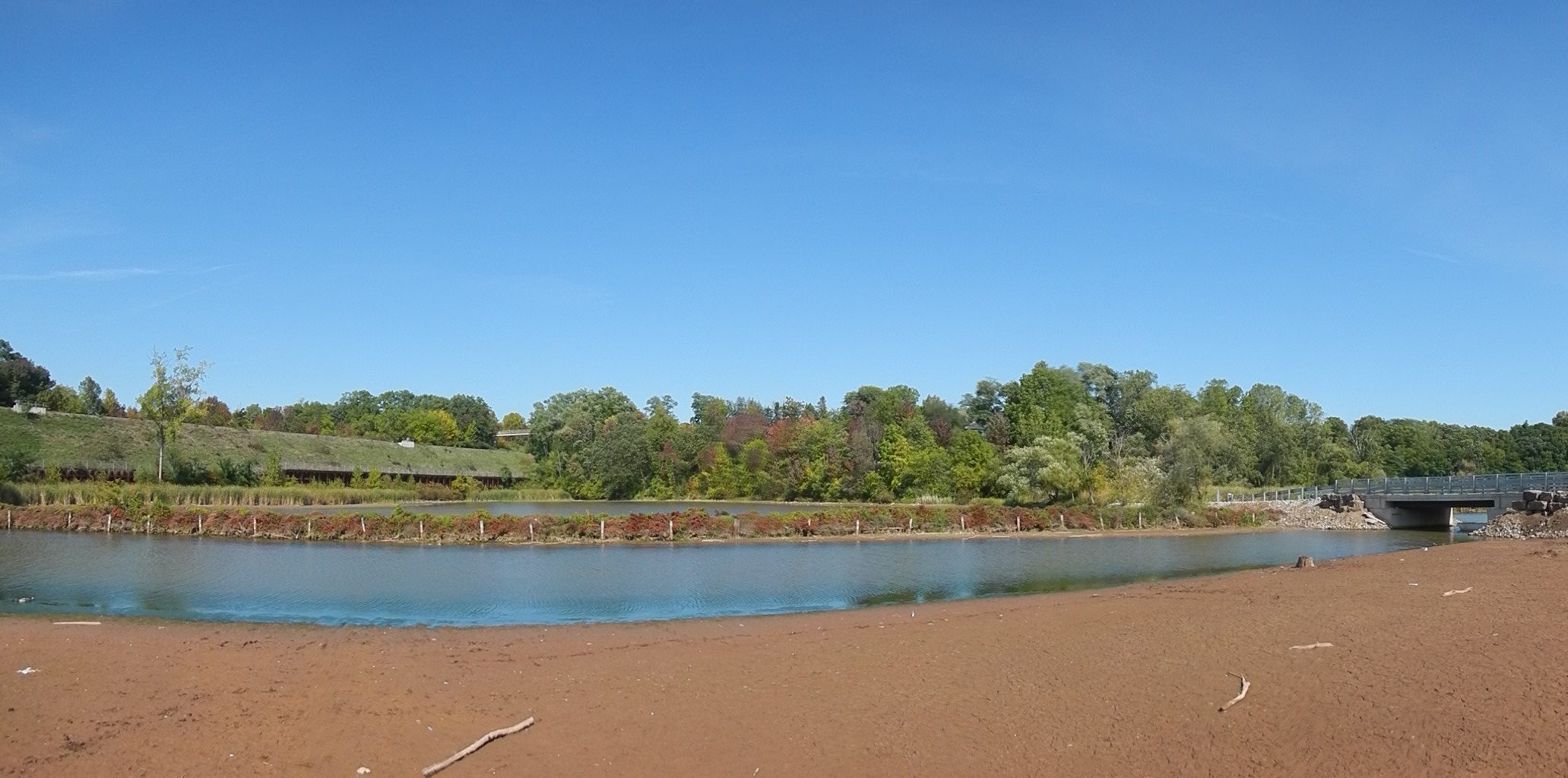After the Holidays, Christmas Trees Have More Work to Do
They’re sheltering aquatic species, keeping out invasive fish, and holding beaches and swamps together.

Every year as the Christmas season approaches, celebrants around the world cut down small evergreens and put them in their homes. They cover them in baubles and tinsel, gather around them to exchange gifts, and breathe in that piney smell. Then the new year rolls around, and they get rid of them.
But after the lights wink off and the needles dry out, a tree’s job isn’t necessarily over. It turns out the same attributes that make Christmas trees so festoonable—the densely packed branches, the pleasing shape, the propensity to attract large groups of people—give them other powers, too. After they’re done holding onto ornaments and overseeing piles of presents, some of these holiday heroes go on to stabilize sand dunes, protect vulnerable marshlands from invasive species, and shelter baby fish.
Summer visitors to Fort Macon in North Carolina might be surprised to see the occasional Christmas tree trunk poking out of the sand, like a ghost from another season. The fort was once a Civil War stronghold, and served as a defense post during World War II. Now it’s a state park, where people come to hike, fish, swim, and learn about this history. As such, the trees are weapons in a different kind of battle.
“We have quite a bit of erosion out here,” explains ranger Ben Fleming. “The beach is always moving.” People walk on top of the dunes, flattening them and breaking up vegetation. Storms come by, shifting vast swaths of sand from place to place. So every year, during January and February, the new cavalry rolls in—thousands upon thousands of Christmas trees, donated by local households.

The program began as a post-holiday experiment. “Starting in the late ‘60s or early ‘70s, some of the rangers had some extra Christmas trees, and they decided to go just put them out in the dunes,” Fleming explains. The trees’ bristly branches immediately began trapping sand. Within a couple of weeks, they were completely covered, helping to hold down areas of the shore that might have otherwise been scattered to the winds. Eventually, native vegetation began to grow around them, providing even more stability. (Several New Orleans parishes have marsh restoration programs that operate using similar principles, and after Hurricane Sandy decimated beaches in New York and New Jersey, communities there piled the shorelines with Christmas trees.)
Since that first success, the Fort Macon rangers have put out an annual call for trees. Fleming estimates they get about 3,000 per year—more if they ask nearby tree-sellers to donate their extras. (“A couple of years ago, Lowe’s [Home Improvement] brought two 18-wheelers full,” he says.) Staff members and volunteers drag the trees up into the dunes, a community effort that doubles as a workout. “It’s very labor-intensive—I’m in shape, and after three or four trees I have to sit down and take a break,” says Fleming. “[But] if you have a large group of volunteers, you can finish a job pretty quickly.”

Humans aren’t the only species that crowds around a Christmas tree. Fish do, too—you just have to put the trees underwater first. “Fish are structure-oriented,” explains Doug Wasmuth, a U.S. Army Corps of Engineers natural resource specialist. “They like any kind of structure. if you put it in the right place, they will be there.”
This tendency inspired the Christmas tree recycling program at Illinois’s Carlyle Lake. A manmade reservoir first filled in 1967, the lake is one of several places in the country that transform used trees into artificial reefs, so that fish and other small critters have places to hide. “Carlyle Lake is over 50 years old,” explains Wasmuth, who oversees the program. “Over time, the natural cover deteriorates. So we try to put artificial structures in the lake to compensate… instead of burning it, or throwing it in the woods or whatever, we’ve actually found a useful way to recycle a tree after the decorations are off.”
The tree-sinking program has been going on for about 25 years, and between 1000 and 1500 trees are donated each season, says Wasmuth. With the help of volunteers, they get strung together in pairs or trios, attached to 25-pound weights, and thrown in specific regions of the lake. There, they lose their needles, sink to the bottom, and—as soon as the water warms in spring—start forming miniature aquatic ecosystems, almost like more realistic snowglobes. “You get the algae, you get the microinvertebrates,” says Wasmuth. “Then you get the little fish, and then the big fish.” In this case, the tree itself is the present: “It allows the young fish that have hatched to get a good start—to have protection and grow.”

A well-placed group of Christmas trees can also keep fish from going where they’re not supposed to. At the Grindstone Creek Marsh in Ontario, Canada, land managers from the Royal Botanical Gardens are fighting an invasive fish species, the common carp, using a berm made out of the trees. In photos, it stretches across the Creek’s mouth like an enormous, prickly beaver dam.
The carp started moving in during the late 1800s, and were accidental Grinches from the start. “They love to swim into shallow water and churn up the dirt when they’re spawning,” says David Galbraith, the Head of Science at RBG, which oversees the creek and other nearby marshlands. This habit uproots plants, keeps light from reaching lower levels of the marsh, and generally wreaks havoc with native ecosystems.
If the carp can’t get in, though, they can’t make trouble. And so in 2000, staff decided to build a barrier in the creek that would let certain fish into the creek while keeping others out. The perfect material? Christmas trees, which are densely packed enough that adult carp can’t wriggle through them, but permeable enough that smaller creatures have no trouble. (In other words, it’s a Santa-esque process: good fish get in, while bad fish get turned away.) They also sit firmly on top of the mud at the bottom of the creek, and accumulate sediment in their branches, which encourages the growth of wetland plants.

The Christmas tree wall acts in combination with a more active measure, a fishway at nearby Cootes Paradise Marsh that allows workers to sort wanted fish from bad. It’s topped off as needed with new donations. (They will most likely call for some this year, as the barrier was flooded last winter.) Hikers walking near Grindstone Creek get to see an unusually festive bit of infrastructure all year round.
These are all particularly angelic Christmas tree afterlives. But even if you’re not near one of these particular places, there are a lot of ways to prolong your tree’s usefulness. Many other communities use trees to fortify eroded areas and create wildlife habitats. The U.S. Fish & Wildlife Service has suggestions for turning your discarded tree into a shelter for rabbits, or a buffet for birds and deer. Even in cities, many sanitation services will chip them into mulch.
So before you go putting that good old Tannenbaum out with the trash, consider looking into other opportunities for it. After all, maybe your tree has a New Year’s resolution, too.













Follow us on Twitter to get the latest on the world's hidden wonders.
Like us on Facebook to get the latest on the world's hidden wonders.
Follow us on Twitter Like us on Facebook